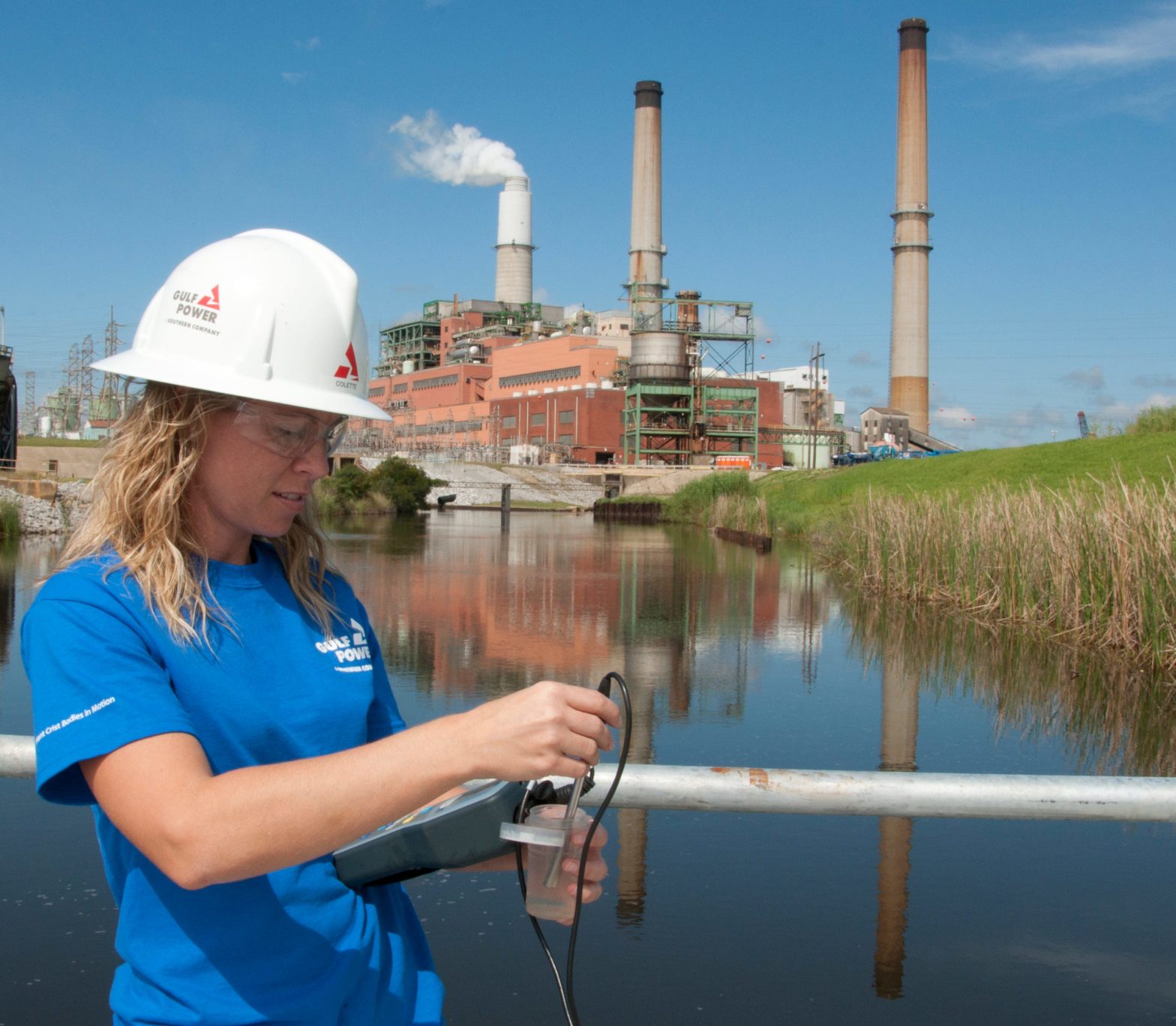
While the gulf coast is still dealing with the after math of the 2010 British Petroleum oil spill disaster, the Environmental Protection Agency is taking steps, as reported Wednesday, to prevent the repeat of another disaster, the 2008 Kingston, Tenn. coal ash spill. The rules primarily have to do with preventing coal ash from getting into groundwater or the air through inspections and restrictions on ash storage sites. Jeff Rogers, corporate communications manager with Gulf Power Company, discussed how GP has been handling EPA requirements.
According to Rogers, GP has three coal-fired plants in northwest Florida with Plant Crist, in Pensacola, being the closest to Santa Rosa County. Plant Smith, he said is in Panama City and Plant Scholz is near Sneads, in north Florida, but is scheduled for retirement in April of this year.
“Plant Crist converted to a dry ash system in the 1980s. Ash is stored in a secure landfill for beneficial reuse at a future date. There are no remaining ash ponds. A Florida Department of Environmental Protection approved groundwater-monitoring plan for the landfill has been in place since the mid-1980s,” he said. The other two plants, Rogers said, have a pond for storage of ash and for recycling of water. Fortunately, he said GP has never had any accidents with its coal ash disposal.
As a side note, the EPA’s website lists the benefits of coal ash reuse as Rogers mentioned at Plant Crist. According to the EPA, right now the only method of reusing ash in place is in “encapsulated reuse.” The encapsulated uses of coal combustion residuals (CCRs), according to the EPA, are where coal ash is bound in a product, such as in wallboard, concrete, roofing materials, and bricks. The site goes on to say this year, the EPA is working on plans to use coal ash in a “loose or unbound particulate or sludge form.”
In looking after the storage sites, Rogers said, “Gulf Power performs a regular inspection and maintenance regimen on its wet and dry ash storage facilities, surpassing requirements set by Florida Department of Environmental Protection permits. FDEP permits require all ash pond dikes be inspected and certified annually for structural integrity and no breaches are allowed. Gulf Power conducts annual inspections of its storage facilities, with weekly inspections conducted by trained facility personnel. In addition, Gulf Power uses geotechnical experts to inspect its facilities. Monitoring wells are located adjacent to ponds and landfills to ensure compliance.”
To manage windblown ash from the dry storage on Plant Crist property, Rogers said, “Gulf Power has used methods, such as wetting areas, and gravelling of some areas to help control dust. As each dry ash landfill cell is completed, it is capped and grassed to eliminate any issues with windblown dust.”
Part of the EPA's requirements include public reporting of "annual groundwater monitoring results, corrective action reports, coal ash fugitive dust control plans, and closure completion notifications,” according to the agency. Rogers said many of these items are already available at the FDEP website. For the remainder, he said, “We are in the process of determining how this information will be made available on the Internet.”
As new as these rules are, Rogers said, “Currently, only a pre-publication document of the proposed rule is available for review. Sometime next year, we expect the EPA to publish the final rule.”
Once the EPA has the final rule in place, and GP has had time to review it, Rogers said the company will be able to determine what kind of financial impact the new rules will have. Reiterating GP’s environmental record, Rogers said, “Gulf Power continues to meet all state and federal environmental standards and is poised to be able to meet a final rule on coal combustion residuals.
Since 1992, Gulf Power has reduced emissions from its power plants in Northwest Florida by more than 85 percent while electricity demand has grown by more than 30 percent.”
This article originally appeared on Santa Rosa Press Gazette: Gulf Power poised to meet 2015 EPA regulations
